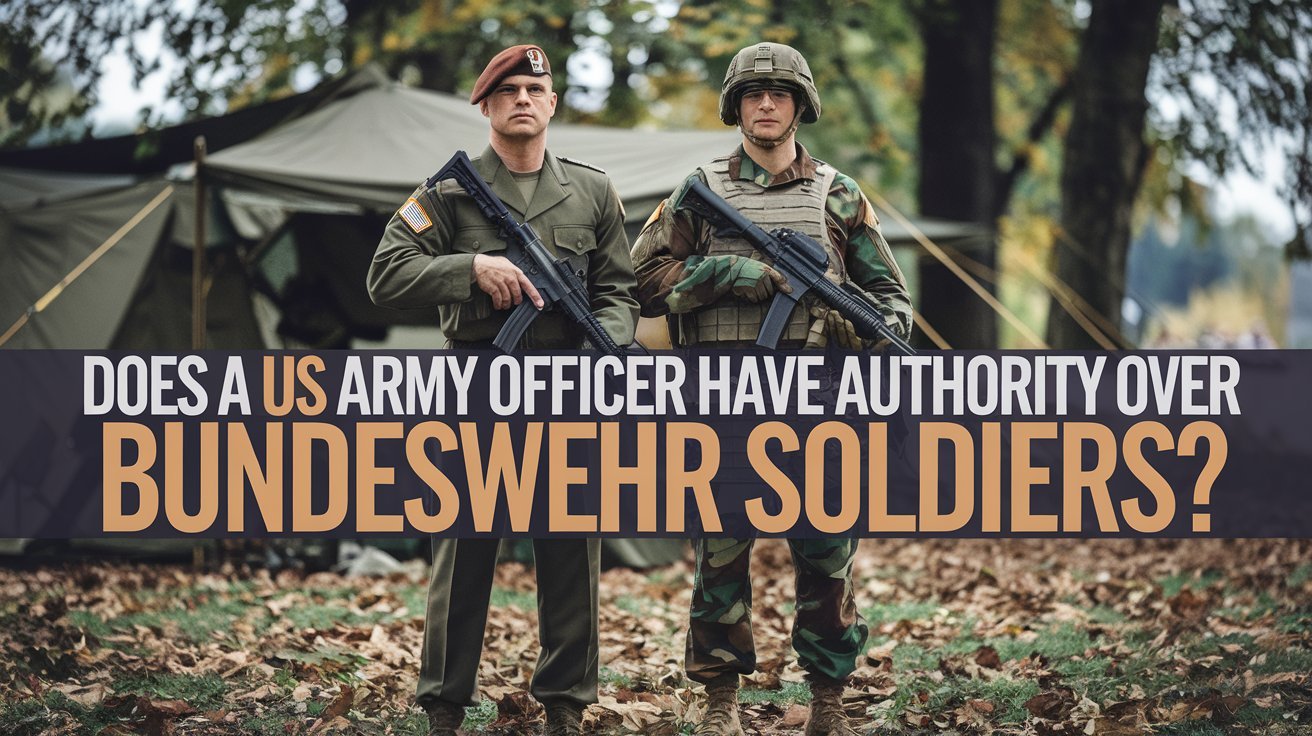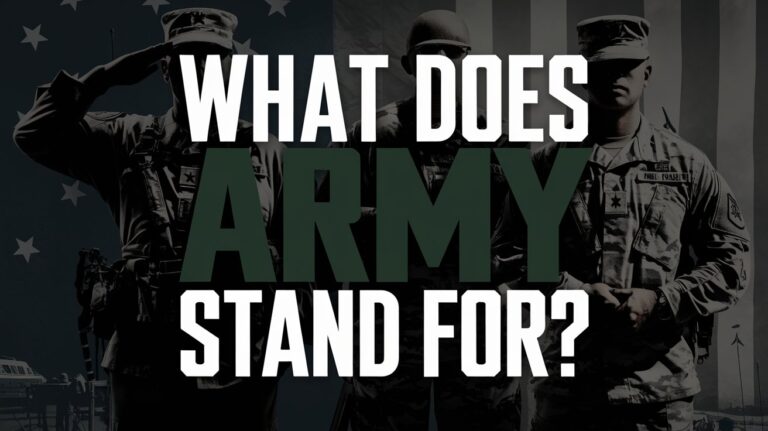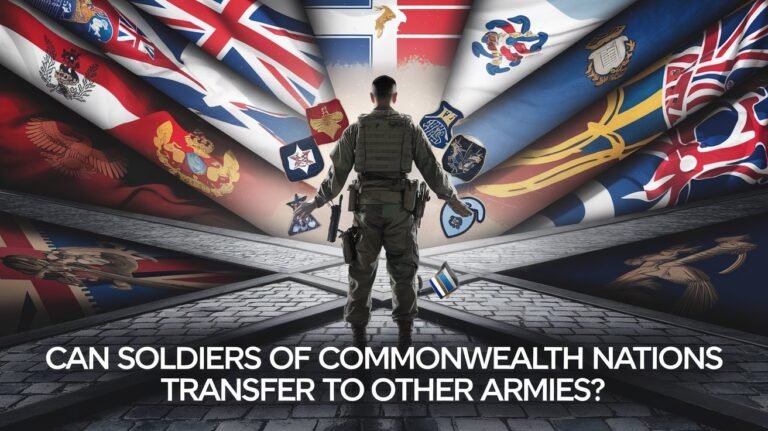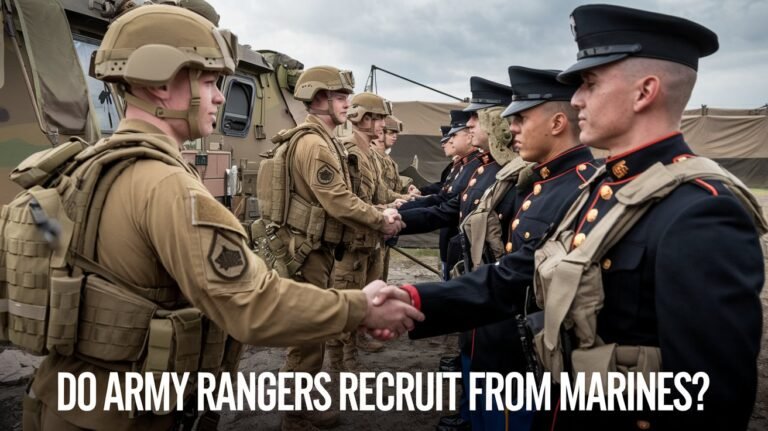Does A Us Army Officer Have Authority Over Bundeswehr Soldiers?

The partnership between the US military and the Bundeswehr (German Armed Forces) is growing stronger. A big question is: do US Army officers have control over German soldiers in joint operations? This question explores the complex world of military command, legal limits, and teamwork between different countries.
The US and Germany have worked closely together for over 50 years. The 7th Army Training Command’s Office of the Staff Judge Advocate (OSJA) helps sort out legal issues and who has authority. But how do these rules work when US and German troops work together in tough situations?
Does a US Army Officer Have Authority Over Bundeswehr Soldiers
The authority of a US Army officer over Bundeswehr soldiers varies. It depends on the specific situation and agreements in place. During joint exercises and NATO operations, clear command structures are set up.
Generally, US Army officers do not have direct control over Bundeswehr soldiers. The military follows the “national caveats” rule. This means each nation controls its own forces. But, there are special cases that can change this.
| Situation | Authority of US Army Officer |
|---|---|
| NATO Operations | US Army officers may have operational control over Bundeswehr units. They can direct their tactical use. But, the Bundeswehr keeps administrative control and national command. |
| Joint Exercises | In combined training, US Army officers might lead as the overall director. They can give orders to Bundeswehr soldiers. But, the Bundeswehr keeps its own chain of command and discipline. |
| Bilateral Agreements | Some agreements between the US and Germany give US Army officers limited authority. This is in specific situations, like joint patrols or operations. |
The exact command relationships and authority are outlined in the Status of Forces Agreements (SOFAs) and treaties. These agreements respect the rights and interests of both countries. They also make military cooperation possible.
Military Command Authority in NATO Operations
NATO operations have complex command structures. They need careful coordination among member nations. The difference between direct command and operational control is key. It shows how much authority each nation has.
Tactical-level authority is important in joint exercises. For example, the German Armed Forces Badge of Marksmanship event. Here, soldiers from different NATO countries work together to improve their skills.
Direct Command vs Operational Control
Direct command lets a nation control its forces fully. It decides how to use them. Operational control, on the other hand, limits authority to a specific mission.
This difference is crucial for smooth integration of forces. It helps NATO members work well together during joint operations.
Tactical Level Authority
At the tactical level, authority is key for success. The German Armed Forces Badge of Marksmanship is a great example. Soldiers from NATO countries show their skills in weapons systems.
This cross-training and skill-sharing boost the alliance’s tactical abilities. It makes NATO stronger.
Strategic Command Relationships
Strategic command in NATO comes from mutual defense agreements and protocols. These frameworks make sure everyone knows their place in the nato chain of command. Joint operations and international security agreements keep the alliance united and effective.
| Country | Defense Spending (% of GDP) | Notable Military Capabilities |
|---|---|---|
| Finland | 2.3% | Strong air defense, advanced artillery |
| Sweden | Increased by 700 million Crowns in 2024 | Modern fighter jets, naval capabilities |
| Poland | 4% | Substantial ground forces, growing air power |
| Romania | Not specified | Significant tank and artillery capabilities, air defense systems |
| Baltic States | At least 2% | Rapid response units, strong cyber defense |
Status of Forces Agreement Between US and Germany
The Status of Forces Agreement (SOFA) between the United States and Germany explains who has legal authority over U.S. Soldiers in Germany. It ensures that the right legal body handles cases where U.S. Soldiers are accused of crimes in Germany.
The NATO SOFA was signed in 1951, with a 1993 update for Germany. U.S. military personnel need to show their military ID and NATO orders. U.S. government workers, contractors, and their families need a SOFA certificate in their passport to live in Germany legally.
People who can get a SOFA certificate should do so before moving to Germany. But, U.S. citizens and others not needing a visa can enter without one if they can’t get it before leaving. They must carry an official ID, register vehicles with U.S. Army Europe, and have a SOFA certificate in their passport to prove they can live and travel in Germany.
For more details on passports and SOFA certificates, check the U.S. Army Garrison Bavaria website. The Army in Europe Regulation 600-77 also has information on who can get a SOFA ID in Germany.
Joint Training Operations and Command Protocols
The U.S. and German armed forces work together in joint training. This helps them to work better together and understand each other’s cultures. For example, U.S. Soldiers learn about German weapons like the G36 rifle and P8 pistol.
This sharing of knowledge strengthens their partnership. It makes them better at working together in joint operations.
Combined Arms Training Initiatives
The U.S. Army and the Bundeswehr (German Armed Forces) do combined arms training. They focus on working together smoothly. This includes learning to communicate well and improve their tactics.
Through these exercises, they become more ready to work together. This readiness is key for success on the battlefield.
Cross-Cultural Military Integration
Joint operations need a good understanding of each other’s cultures. The U.S. and German forces work on this through training and exchanges. This helps them respect each other and work well together.
It also helps them deal with any language or cultural differences. This is important for successful combined operations.
Standardized Operating Procedures
The U.S. and German militaries have set up common operating procedures. These SOPs cover many areas, like communication and logistics. They help the forces work together smoothly.
By following these standards, they can integrate their efforts better. This makes them more effective and ready for joint missions.
Military Justice Systems and Jurisdictional Authority
The U.S. military uses the Uniform Code of Military Justice (UCMJ) and the U.S. Constitution. German authorities follow the Strafgesetzbuch and Grundgesetz. These systems differ in how they handle pretrial detention, trials, and appeals. Who has jurisdictional authority over U.S. Soldiers in Germany depends on the situation.
The UCMJ has a three-tiered court-martial system: general, special, and summary. A general court-martial needs high-level commanders and can impose harsh punishments. A special court-martial can give up to six months in hard labor. Summary courts are for lower commanders and have different rules.
- In World War II, there were 1.7 million American courts-martial conducted.
- After the war, 85% of the sentences of the 27,500 servicemen imprisoned were remitted or reduced due to public outcry.
- The UCMJ was enacted in 1950, and the commander retains significant control in court-martial processes, including selecting court members and prosecutors.
- Decisions like Argersinger v. Hamlin in 1972 affected the rights of servicemen in summary court-martial proceedings.
In Finland, military law applies to all military personnel, including conscripts and reservists. Military jurisdiction starts when a person joins the military and ends when they leave. Even enemy prisoners of war are under Finnish military law while imprisoned.
The differences in military justice systems and jurisdictional authority between the U.S. and Germany show the need for clear rules in combined military operations.
Chain of Command During Combined Exercises
During events like the Schützenschnur, U.S. and German forces work together. They share leadership and follow a chain of command. This ensures everyone works well together.
Exercise Control Elements
The exercise control elements oversee the exercises. They make sure everything runs smoothly. This includes:
- Monitoring the execution of training objectives
- Facilitating information exchange between the U.S. and German forces
- Resolving any issues or conflicts that may arise during the exercise
- Ensuring adherence to standardized operating procedures
Leadership Responsibilities
Leadership is shared between the U.S. and German forces. This teamwork helps in making decisions and achieving goals. Key responsibilities include:
- Coordinating the deployment and movement of troops and equipment
- Overseeing the execution of tactical maneuvers and combat simulations
- Fostering cross-cultural integration and mutual understanding
- Ensuring the safety and well-being of all participating personnel
With a clear chain of command, the U.S. Army and the Bundeswehr can improve their teamwork. They work together better, get ready faster, and strengthen their partnership.
| Exercise Control Element | Responsibility |
|---|---|
| Monitoring | Oversee the execution of training objectives |
| Information Exchange | Facilitate communication between U.S. and German forces |
| Issue Resolution | Resolve any conflicts or problems that arise during the exercise |
| Procedure Adherence | Ensure compliance with standardized operating procedures |
Legal Framework for US-German Military Cooperation
The legal setup for US-German military teamwork is based on many agreements and treaties. The Status of Forces Agreement (SOFA) is at the heart of this. It spells out the rights and duties of US troops in Germany. This agreement helps the U.S. Army and Germany’s Bundeswehr work well together in areas like jurisdiction and training.
Over time, the legal base for US-German military ties has changed. After World War II, Germany wasn’t allowed to have its own military. But in the 1950s and 1990s, agreements and decisions helped Germany regain its military freedom. This allowed Germany to join NATO and the UN in military operations.
Now, the legal setup for US-German military cooperation includes many treaties and laws. The North Atlantic Treaty ties NATO members together for defense. The German Federal Constitutional Court’s 1994 decision also played a big role. Plus, the Bundestag must okay any foreign missions of the Bundeswehr, keeping things democratic and accountable.
| Year | Event |
|---|---|
| 1951 | Establishment of the Federal Border Guard as a paramilitary federal police force for protecting the inner-German border. |
| 1955 | Accession of the Federal Republic of Germany to NATO as the 15th member state. |
| 1994 | The Federal Constitutional Court ruling on July 12, 1994, permitted Germany to assign armed forces in operations under NATO, WEU, and UN mandates. |
The legal framework for US-German military cooperation has been key to their strong partnership. It sets clear rules for working together in military tasks. This framework keeps getting updated to meet new security needs, helping the US-German military partnership thrive.
Rank Structure and Equivalency Between Forces
For U.S. and German forces to work well together, they need to understand each other’s military ranks. This includes knowing who has what authority. By looking at officer grades and command levels, we can make sure they can work together smoothly.
Officer Grade Comparisons
It’s important to compare officer ranks between the U.S. Army and the Bundeswehr (German Army). This helps us see who is in charge. Even though some ranks might not match exactly, the overall structure is similar.
- Second Lieutenant (US) ≈ Leutnant (Germany)
- First Lieutenant (US) ≈ Oberleutnant (Germany)
- Captain (US) ≈ Hauptmann (Germany)
- Major (US) ≈ Major (Germany)
- Lieutenant Colonel (US) ≈ Oberstleutnant (Germany)
- Colonel (US) ≈ Oberst (Germany)
- Brigadier General (US) ≈ Generalmajor (Germany)
- Major General (US) ≈ Generalleutnant (Germany)
- Lieutenant General (US) ≈ General (Germany)
- General (US) ≈ Generaloberst (Germany)
Command Position Authority
When U.S. and German forces work together, who has the final say can change. Usually, the highest-ranking officer leads. But, the exact power can depend on the mission and the military rank structure, officer ranks and insignia, and the command authority set for the operation.
| Rank Comparison | US Army | Bundeswehr (Germany) |
|---|---|---|
| Second Lieutenant | Leutnant | |
| First Lieutenant | Oberleutnant | |
| Captain | Hauptmann | |
| Major | Major | |
| Lieutenant Colonel | Oberstleutnant | |
| Colonel | Oberst | |
| Brigadier General | Generalmajor | |
| Major General | Generalleutnant | |
| Lieutenant General | General | |
| General | Generaloberst |
Host Nation Support and Military Integration
Host nation support is key for the U.S. Army and Germany’s Bundeswehr to work well together. Events like the Schützenschnur qualification help U.S. soldiers learn about German weapons and how they work. This sharing of knowledge improves how the two forces can work together in joint operations.
The U.S. and Germany have a strong partnership shown through training and standard procedures. These efforts help the militaries to communicate and work together smoothly, even in complex situations. This teamwork is crucial for success in joint operations.
Germany’s support is very important for the U.S. Army. It lets the U.S. use local resources and expertise to support its operations. This partnership strengthens the military ties between the two countries, preparing them for future joint efforts.
Combined Military Operations Decision-Making Process
For the U.S. and Germany to work well together in military operations, they need a solid decision-making plan. This plan combines operational planning and command authority distribution. It makes sure joint missions run smoothly.
Operational Planning
Planning for joint military operations involves teamwork between U.S. and German forces. They look at many things like goals, resources, and support. This helps create a strong and effective plan.
Command Authority Distribution
How command is shared in joint operations is set by rules between the U.S. and Germany. These rules outline who does what, making sure everyone knows their role. This leads to clear decisions and efficient action.
Following this process helps the U.S. and German militaries work together better. They use their strengths to reach their goals in joint operations.
Mutual Defense Agreements and Command Authority
Mutual defense agreements, like those in NATO, are key in shaping command structures in military operations. They set out clear rules for who makes decisions in multinational forces. This affects how U.S. Army officers work with their German Armed Forces counterparts.
The Mutual Personnel Exchange Agreement between the U.S. Army and Germany is a great example. It helps build cooperation and understanding between the two militaries. This program lets personnel from both countries exchange places, strengthening their friendship.
| Key Provisions of the Mutual Personnel Exchange Agreement |
|---|
| One-for-one personnel exchanges, with no training provided except for orientation Normal tour lengths of two years for U.S. personnel and three years for German personnel, with exceptions based on mutual agreement Aeronautical and parachutist-rated personnel may be assigned to relevant duties Parent Party responsible for pay and allowances of their Military Exchange Personnel |
The agreement also talks about when one country can take custody of someone. This includes serious offenses, requests from the other country, or if the person is part of another force. It explains how to transfer custody and who keeps it.
These agreements and NATO’s command structures are vital for global security. They help military forces work together across borders effectively.
Cross-Military Cultural Protocols and Leadership
Leading in a global military setting needs a deep respect for different cultures. Events like the Schützenschnur qualification help soldiers from various countries understand each other better. It builds a strong bond among them.
Leadership here focuses on being flexible, clear in communication, and valuing each culture’s traditions. The U.S. Army and U.S. Marine Corps teach these skills. They help leaders work well with different cultures.
The world’s security situation is changing fast. The U.S. Army sees threats from Russia, China, and criminal groups. Being able to work together well is key. Military schools share their best practices to prepare future leaders for these challenges.






